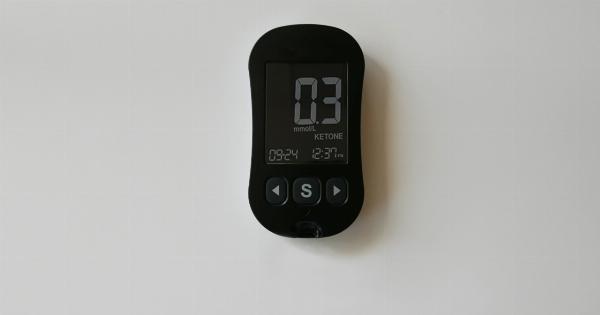Systolic pressure, also known as the top number in a blood pressure reading, represents the amount of pressure exerted on the arteries when the heart contracts.
It is a crucial measurement in assessing cardiovascular health and is directly linked to various heart-related diseases and conditions. Lowering systolic pressure is of paramount importance as it can significantly reduce the risk of heart disease, stroke, and other cardiovascular complications.
This article will delve into why understanding and actively managing systolic pressure is vital for maintaining good heart health.
The Link Between Systolic Pressure and Cardiovascular Health
High systolic pressure is one of the primary risk factors for cardiovascular disease. When the heart contracts forcefully, it puts excessive pressure on the arteries, leading to damage over time.
This increased pressure can cause the arteries to become narrow, hardened, or even blocked, restricting blood flow and oxygen supply to vital organs, such as the brain and heart.
If left uncontrolled, high systolic pressure can lead to serious health issues, including:.
- Coronary artery disease
- Heart failure
- Stroke
- Kidney problems
- Vascular dementia
The Optimal Systolic Pressure Range
The American Heart Association (AHA) recommends that adults maintain a systolic pressure below 120 mmHg to reduce the risk of cardiovascular events.
However, the target range may vary based on individual circumstances, such as age, overall health, and presence of other medical conditions.
To determine the optimal systolic pressure goal for an individual, healthcare professionals consider factors like:.
- Age
- Personal and family medical history
- Presence of diabetes or other chronic conditions
- Overall cardiovascular risk profile
It is essential to regularly measure blood pressure and consult healthcare providers to establish a personalized systolic pressure target.
Effective Ways to Lower Systolic Pressure
Lowering systolic pressure requires a comprehensive approach that often combines lifestyle changes, medication, and ongoing monitoring. Here are some effective strategies to help reduce systolic pressure:.
1. Regular Exercise
Engaging in regular physical activity is one of the most effective ways to lower systolic pressure. Exercise helps strengthen the heart muscles, improves blood flow, and promotes overall cardiovascular health.
Aim for at least 150 minutes of moderate-intensity aerobic activity or 75 minutes of vigorous aerobic activity per week.
2. Heart-Healthy Diet
Adopting a heart-healthy diet can greatly contribute to lowering systolic pressure. Focus on consuming nutrient-rich foods like fruits, vegetables, whole grains, lean proteins, and healthy fats.
Limit the consumption of sodium, saturated fats, and refined sugars, as they can elevate blood pressure. Additionally, reducing alcohol and caffeine intake is recommended.
3. Weight Management
Maintaining a healthy weight plays a significant role in managing systolic pressure. Losing excess weight can significantly reduce blood pressure levels, especially when combined with regular exercise and a balanced diet.
Consult with a healthcare professional to determine the ideal weight goals and develop a personalized weight management plan.
4. Stress Reduction Techniques
Chronic stress can contribute to elevated blood pressure levels. Practicing stress reduction techniques, such as meditation, deep breathing exercises, yoga, or engaging in hobbies, can help manage stress and lower systolic pressure.
5. Limit Sodium Intake
Excessive sodium intake is a major contributor to high blood pressure. Reduce the consumption of processed and packaged foods, as they often contain high levels of sodium.
Instead, opt for fresh and homemade meals, seasoning them with herbs and spices instead of salt. Gradually decreasing sodium intake can have a positive impact on systolic pressure.
6. Medication Adherence
In some cases, lifestyle changes alone may not be sufficient to lower systolic pressure. Healthcare professionals may prescribe medications to manage blood pressure effectively.
It is crucial to take medication as prescribed and follow up regularly with healthcare providers to monitor and adjust the treatment plan if necessary.
7. Regular Blood Pressure Monitoring
Ongoing monitoring of blood pressure is vital for individuals with hypertension or those at risk of developing high blood pressure. Home blood pressure monitors are widely available and provide a convenient way to track blood pressure levels.
Regular monitoring empowers individuals to take timely action if there are any significant changes that require medical attention.
The Importance of Lowering Systolic Pressure
Lowering systolic pressure offers several significant benefits for cardiovascular health and overall well-being. Here are a few reasons why managing this vital measurement is crucial:.
1. Reduces the Risk of Cardiovascular Events
Lowering systolic pressure helps decrease the risk of cardiovascular events, including heart attacks, strokes, and heart failure. By maintaining a healthy blood pressure range, individuals can significantly improve their heart health and longevity.
2. Preserves Kidney Function
Uncontrolled high systolic pressure can damage the kidneys over time. Lowering blood pressure helps preserve kidney function and reduces the risk of developing kidney disease or complications.
3. Prevents Vascular Dementia
Persistent high blood pressure can lead to restricted blood flow to the brain, contributing to the development of vascular dementia.
By managing systolic pressure, individuals can potentially reduce the risk of cognitive decline and memory disorders associated with vascular dementia.
4. Enhances Overall Quality of Life
Lowering systolic pressure not only improves cardiovascular health but also enhances overall quality of life.
By effectively managing blood pressure levels, individuals may experience increased energy, decreased fatigue, better sleep, and improved mental well-being.
Conclusion
Systolic pressure, the top number in a blood pressure reading, is a critical indicator of cardiovascular health. Lowering systolic pressure significantly reduces the risk of heart disease, stroke, and other cardiovascular complications.
By adopting a comprehensive approach that includes lifestyle changes, medication when necessary, and regular monitoring, individuals can effectively manage their systolic pressure and contribute to a healthier and longer life.





























